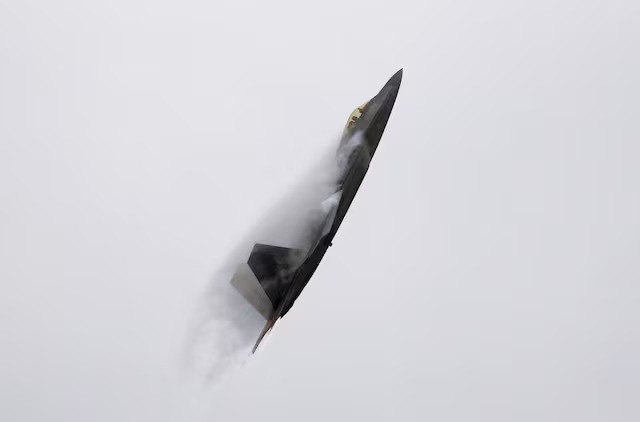WASHINGTON:
The US Air Force’s ambitious next-generation fighter jet programme, envisioned as a revolutionary leap in technology, may become less ambitious due to budget pressures, competing priorities, and changing goals, according to defence officials and industry executives.
Initially conceived as a “family of systems” centred around a sixth-generation fighter jet, the Next Generation Air Dominance (NGAD) programme aims to replace the F-22 Raptor and equip the United States with the most advanced weaponry in the sky well into the mid-21st century.
When first proposed, the NGAD programme had high expectations, including unmatched stealth capabilities, laser weapons, and onboard artificial intelligence to process vast amounts of data from advanced sensor technology. However, sources indicate that the current development budget of $28.5 billion over five years ending in 2029 might be spread out over a longer period or scaled back as the Pentagon seeks cost-effective solutions.
Sources familiar with the Air Force’s internal budget discussions revealed that the anticipated 2026 fiscal-year NGAD budget of $3.1 billion is likely to be reduced, potentially extending the development timeline by two more years.
While the overall programme cost remains uncertain, it could eventually exceed $100 billion if 200 aircraft are produced, including initial costs and subsequent maintenance and upgrades. There are currently 185 F-22s in service, which the NGAD is intended to replace.
The Air Force is also reassessing the jet’s concept, possibly shifting to a larger single-engine design from the initially believed two-engine design or reallocating more funding to a less expensive unmanned drone to address future air superiority needs amid potential budget cuts, industry experts said.
“NGAD was conceived before several developments: before the threat became so severe, before CCAs (drone programme) were introduced, and before we faced current affordability issues,” Air Force Secretary Frank Kendall said at Britain’s Royal International Air Tattoo, the world’s largest military air show, on Saturday. “Before we commit to the 2026 budget, we want to ensure we are on the right path,” he added, noting that the programme will be a key topic at the Farnborough International Airshow this week.
This shift in focus comes as the Air Force deals with significant cost overruns in several crucial and expensive programmes. For instance, the Sentinel intercontinental ballistic missile (ICBM) programme, set to replace the ageing Minuteman III missiles, has ballooned 81% over budget, reaching around $141 billion.
Budget pressures have forced the Air Force to reassess its spending priorities across various modernisation efforts, including increasing production of the new B-21 bomber made by Northrop Grumman.
US aerospace and defence companies Lockheed Martin and Boeing have responded to the Air Force’s request for proposals for the NGAD system, sources told Reuters. While defence firms are not desperate for orders given the ongoing conflicts in Ukraine and Israel driving strong demand, NGAD was one of several potentially significant programmes many hoped would support their bottom line in the coming years.
An Air Force spokesperson told Reuters the department is currently building its fiscal 2026 budget, which will be released early next year. Representatives for Boeing did not return requests for comment, and Lockheed declined to comment on NGAD.
“The part that seems to be getting stalled and re-evaluated is the air vehicle itself, the central platform,” said J.J. Gertler, a senior analyst at aerospace and defence analysis firm the Teal Group. “The Air Force is now making sure that’s what they actually want and possibly changing their mind,” he added.
Possible new configurations include shifting to a single-engine jet to save on upfront costs and long-term maintenance. While twin-engine jets are more expensive to buy and operate, they are more dependable and faster, making them more effective in combat.
Another key component emerging from this restructuring is the potential shift of funds towards the Collaborative Combat Aircraft initiative, an unmanned fighter drone designed to operate alongside the main jet. Development of these less expensive drone platforms does not face budget changes.






